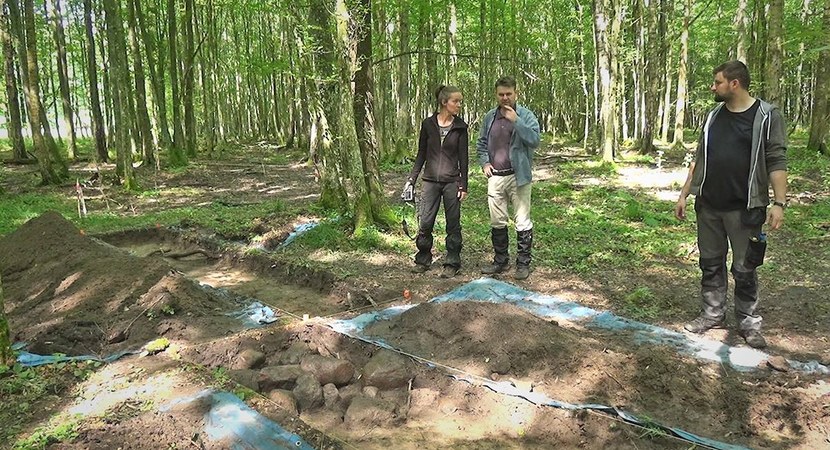The Białowieża Forest reveals its treasures
Unexpected results of archaeological research conducted on Polish side of the Białowieża Forest. Archaeologists discovered 300 km of new line facilities and thousands of point objects.
The inventory and assessment of the Białowieża Forest biodiversity was performed in parallel with the launch of the programme “Cultural heritage inventory” of this region.
Last year already, the experts from the Forest Research Institute (IBL), the Institute of Archaeology and Ethnology of the Polish Academy of Sciences and the representatives of other scientific establishments have launched this project, commissioned by the General Directorate of the State Forests.
- That was a unique opportunity. For the first time in the history of these forests it was possible to perform such a significant and detailed body of research of cultural heritage facilities hidden right here - says Dr. Rafał Zapłata, the coordinator of the programme, from the Institute of Art History of the Cardinal Stefan Wyszyński University in Warsaw (UKSW).
The material obtained during precise Airborne Laser Scanning provided the basis for studies conducted in the Białowieża Forest. The idea of such research arose a few years ago: Dr.Krzysztof Stereńczak from IBL and Dr. Rafał Zapłata from UKSW were their originators. Now, the idea has proved to work well in practice during the last year’s inventory. Thanks to this, it was possible to conduct thorough exploration on such an extensive area, with the participation of many teams of experts working simultaneously.
Airborne Laser Scanning was performed in 2015in leafless season when there is no risk that both foliage and dense ground cover could distort the results. The plane flew at 3 km above the Forest, scanning each square metre every 30 centimetres. The flights were carried out in strips which overlapped each other. It means that a vast part of the area was scanned several times.
A dozen or so people were engaged in so called office work, that is compilation and interpretation of data, and almost twice as many worked in field. The working teams comprised specialist on forestry, geodesy, remote sensing, geomatics, geography and archeology.
The biggest surprise brought by the research was the discovery of so called line structures, which may not seem particularly interesting for a layperson, however among archaeologist they were quite a thrill. These inconspicuous constructions were found within significant part of the Forest, meaning that their arrangement is not random. Dr. Zapłata notes that in many places they are arranged in a pattern of closed, four-sided, regular spaces resembling a grid of old fields.
- Similar, in terms of shape, size and construction, areas enclosed with embankments are known in professional literature as celtic fields. They can be found within the area of Europe, from British Isles to Germany, and probably in Poland, however this needs to be confirmed - says researcher.
During fieldwork, scientists determined that these structures were 2 metres wide at the base and from several to 100 metres long. Clusters of constructions of such type were located within the area of several forest management units. During the penetration testing of one of the embankments it turned out that it was set up with soil and stones. According to the participants of the project “Cultural heritage inventory”, another stage will be a detailed exploration of newly discovered line facilities.
- The research give reason to take a fresh look at the history of the area where the Białowieża Forest is extending. The opinion that only marginal human settlement took place here in the past may change – claims Dr. Zapłata. And soon he adds that numerous discoveries in forest areas and the necessity to protect them, will require a compromise between forest management and maintaining historic objects in good condition. Foresters and archeologists are currently working on reaching this compromise.






